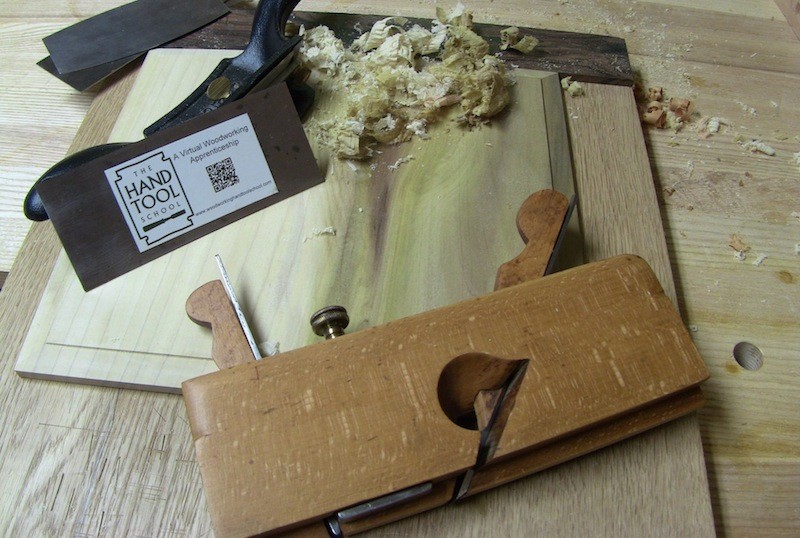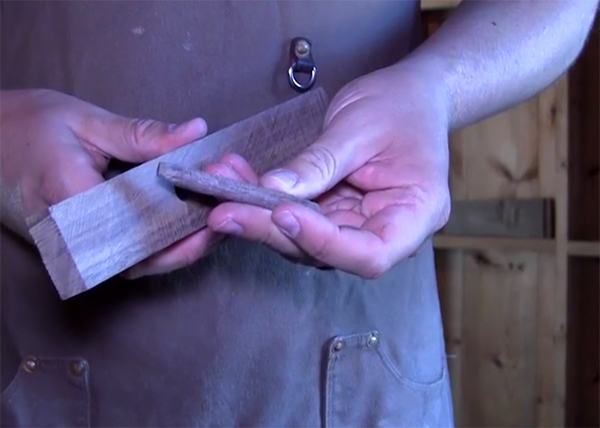Card Scrapers and Drawboring Tips
Rolling the Burr on a Card Scraper
This live broadcast was primarily focused the card scraper. Specifically the angle at which the burr is rolled not just to get those wispy and fluffy shavings but for durability. Usually I see people creating dust and getting frustrated with the card scraper. They cite inability to sharpen it as the problem when in actuality sharpening a card scraper may be the easiest thing you will do at the sharpening bench. It is rolling the burr where things go wrong. Usually too much angle is imparted meaning you have to lean the scraper over dramatically and drag your knuckles to get it to engage.

Moreover that tiny bit of steel is bent over so much that it becomes brittle and breaks off much quicker and makes only dust. Even worse, when the burr breaks off you usually have to go all the way back to a file to re-establish the edge because what is left behind is frayed and ragged. My usually card scraper maintenance allows me to roll a burr several times before I need to break out the file and stones again. This is because I'm not breaking off the burr but just deforming it in use. So I recommend you barely impart any angle at all and show how a shorter burnisher can really make this easier to accomplish.
We also talked about cabinet scrapers and scraping planes and how these tools don't really need a burr and how that can make things more complicated. Certainly you can add a burr but you need to make sure it matches the pitch of the blade set by the frog. Or in the case of the scraping plane, you need to set the frog pitch to match the burr angle.
Don't Draw More than You Can Bore
The second part of this broadcast focused on drawboring and how to eliminate some of the risk that comes from bending a peg around an offset hole. Boring too much offset is one thing but usually joint failures occur because the hole is placed too near the end of the tenon leaving only short grain which is easily broken. You must position the hole far enough from the end but also far enough from the shoulder to prevent splitting out the mortise wall. Finally, having a peg hang up as it navigates the offset will blow apart any joint. So I actually run the peg through my pencil sharpening and bring it down to a sharp-ish point.
drawboring Rules of Thumb
- 1Bore the hole in the tenon no less than 1" from the end
- 2Bore the hole in the tenon greater than 1/2" from the tenon shoulder
- 3Point Your Pegs to avoid hang ups



